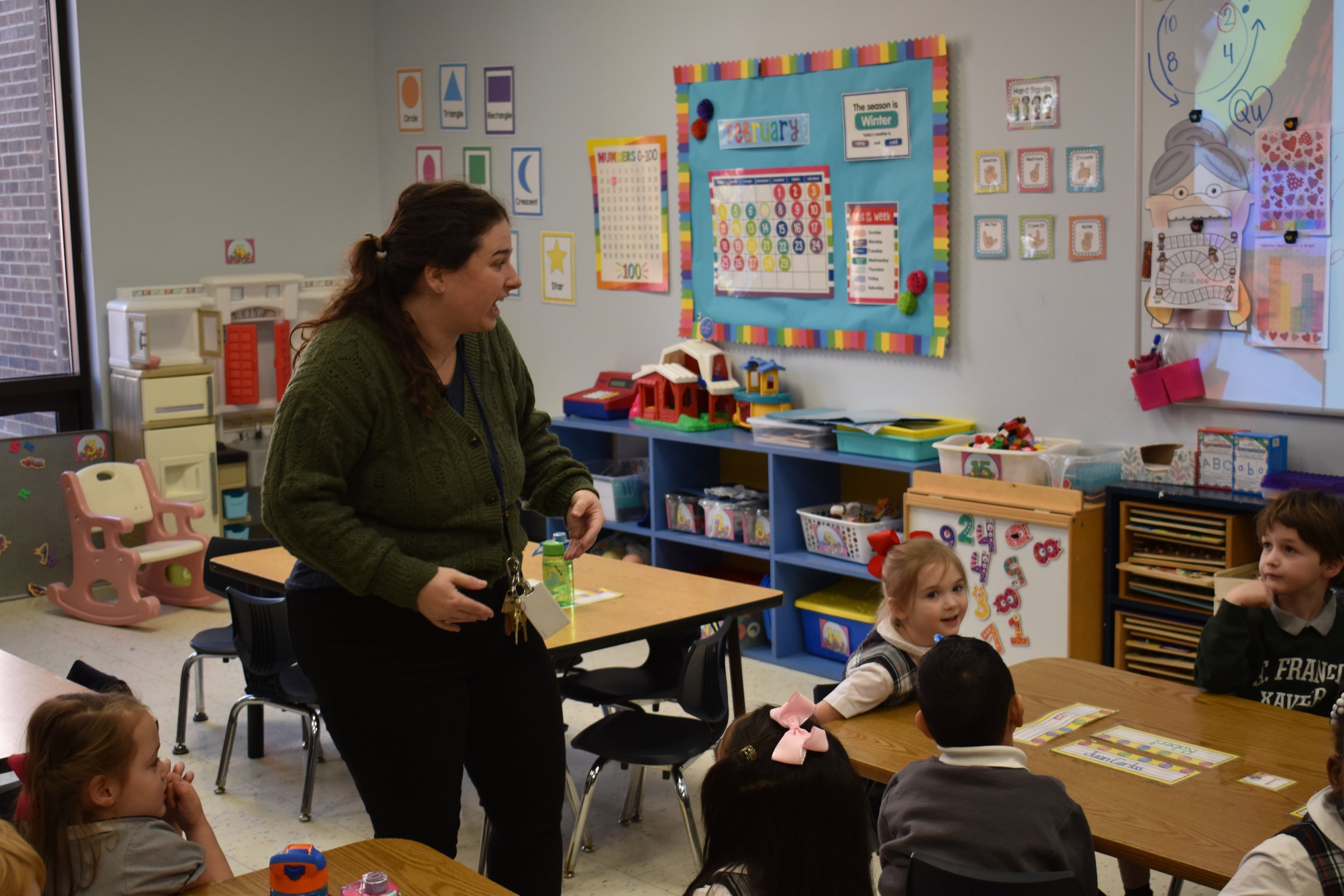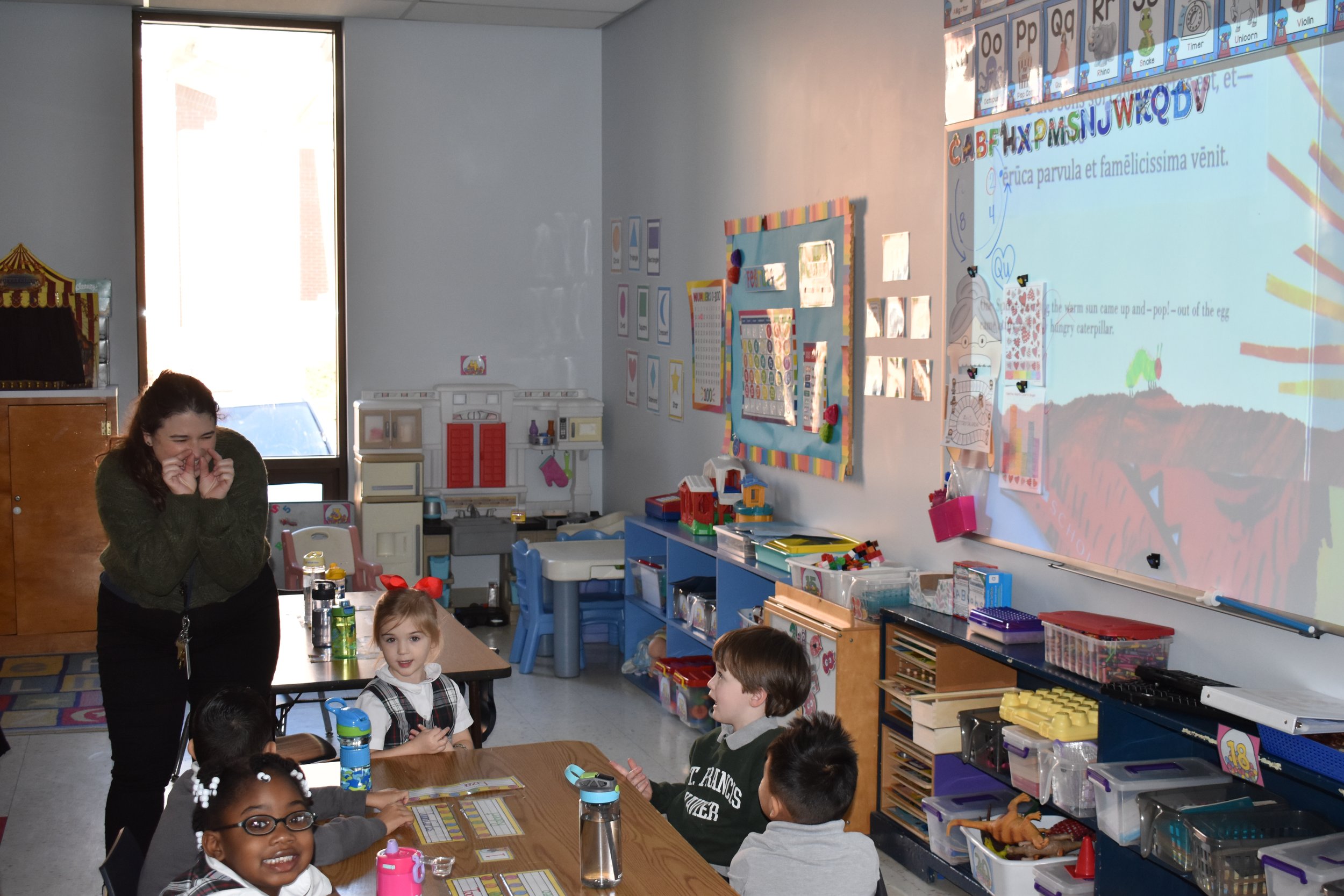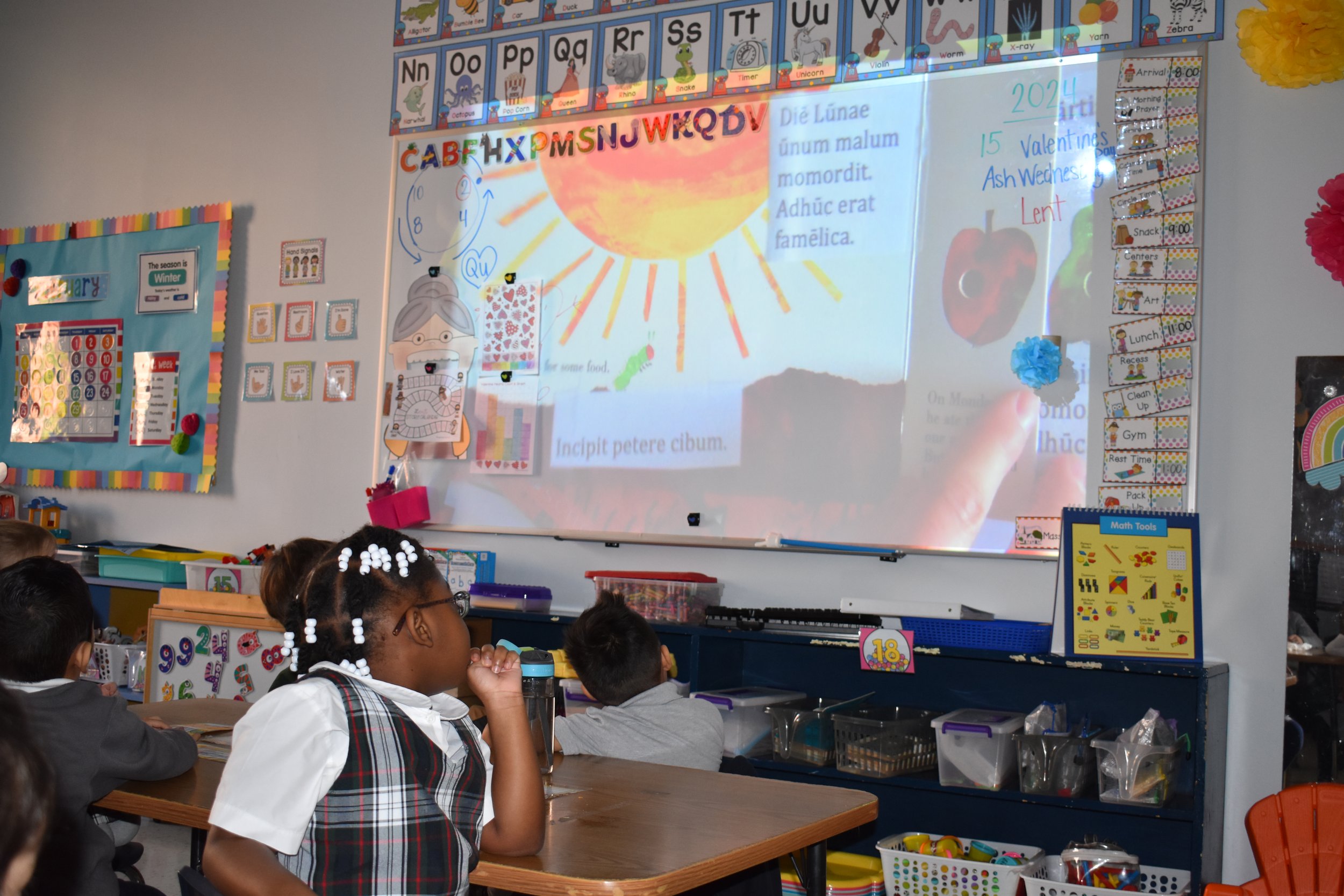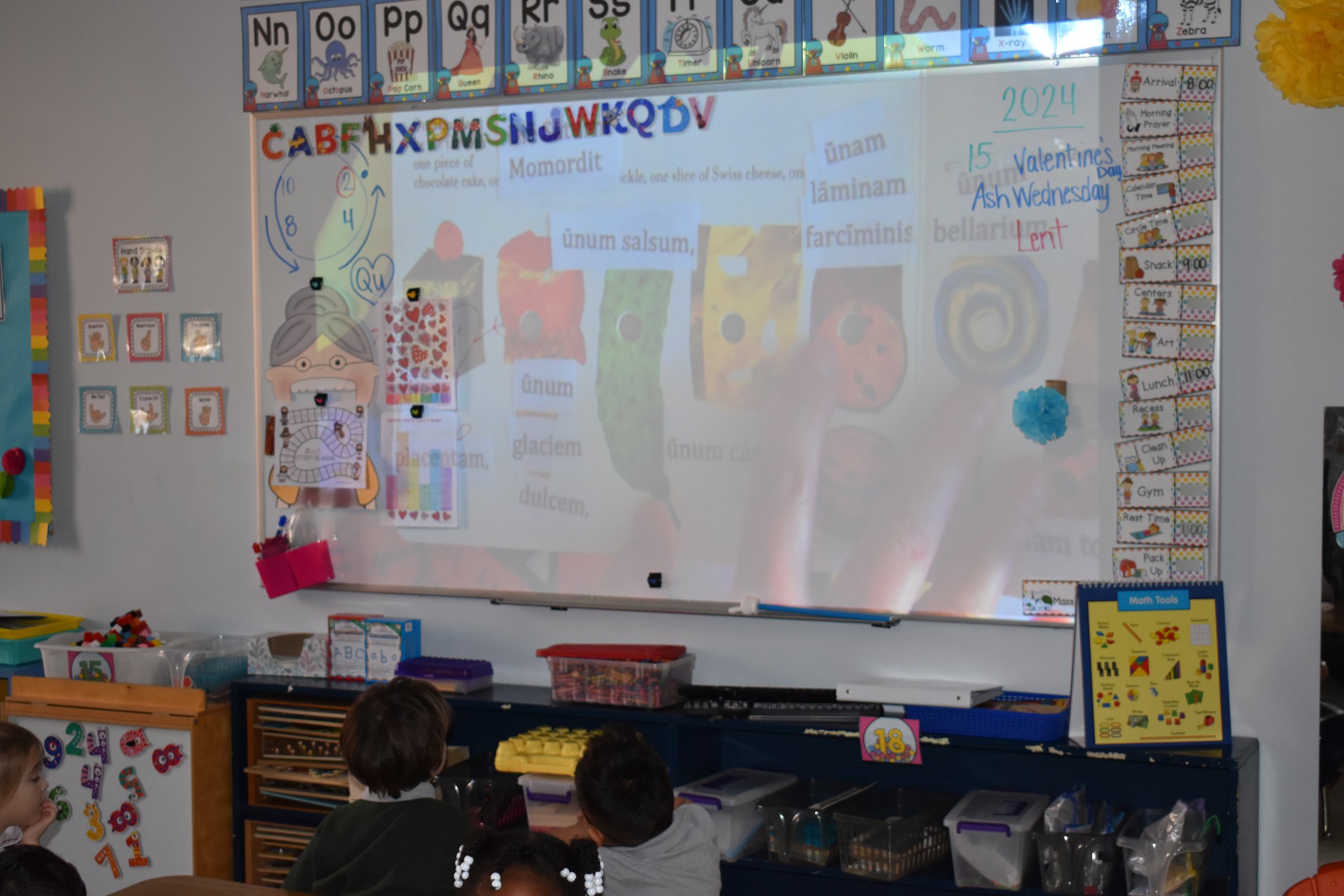Why we teach Latin
Saint Francis Xavier (SFX) Catholic School offers Latin to all students, including our preschoolers, because institution-wide Latin instruction aligns with our mission to inspire students to grow in faith, knowledge, wisdom and virtue as disciples of Jesus Christ.
Learning Latin at any stage in a child’s academic career offers an abundance of research-backed benefits that transfer into other fields of study, such as religion, history, grammar and science. Latin not only increases phonemic and linguistic awareness, but helps students learn to think critically, ask questions, and make connections about cross-cultural and interdisciplinary topics.
Because the SFX Latin classroom is student-driven, I’m able to answer questions from other instances in our day or week that remind my students of what we’re learning in Latin.
SFX students learn about what connects us all as humans and enjoy the liberty (“liberty,” a Latin cognate!) that comes with the exploration of a liberal art so deeply embedded in modern cultures, societies and languages.
Consequently, scholars at SFX School experience the excitement of learning a subject that not only has academic benefits but is woven into every facet of life.
Preschoolers can’t read yet, so why do they need Latin?
At SFX School, we specially tailor our Latin curriculum to meet students at their own level.
For SFX preschoolers, learning Latin is a unique opportunity afforded to students at no other preschool program in the state.
While some students at this stage are still learning to read, Latin gives them an excellent review of letter sounds and how we put them together to create words.
The Latin language uses the same alphabet and has many letter sounds similar to those in English. Our Pre-K curriculum follows their study of the alphabet and includes imaginative play, storytime and practice with motor skills that are all vital to development and cognition at this age.
Why our young readers learn Latin
At the early elementary stage, our Latin curriculum bolsters the foundational skills needed to read, write about and examine information.
Our kindergarten and first-grade scholars receive highly musical Latin instruction to assist in early language acquisition and increase engagement.
These students use the Song School Latin curriculum from Classical Academic Press. This wonderful collection provides our students with a group of related words each week and a fun song to help them remember the words.
My classes also include components of total physical response, like hand motions and movement, to help students rapidly acquire new vocabulary.
SFX School’s classical second-grade history curriculum takes students on a journey through Ancient Rome. In Latin, we bring that journey full circle when students complete a bulla project in class, creating their very own locket which many Roman children would have had. This is a wonderful opportunity to discuss the Roman virtue system and reflect on virtues important to us as Christians.
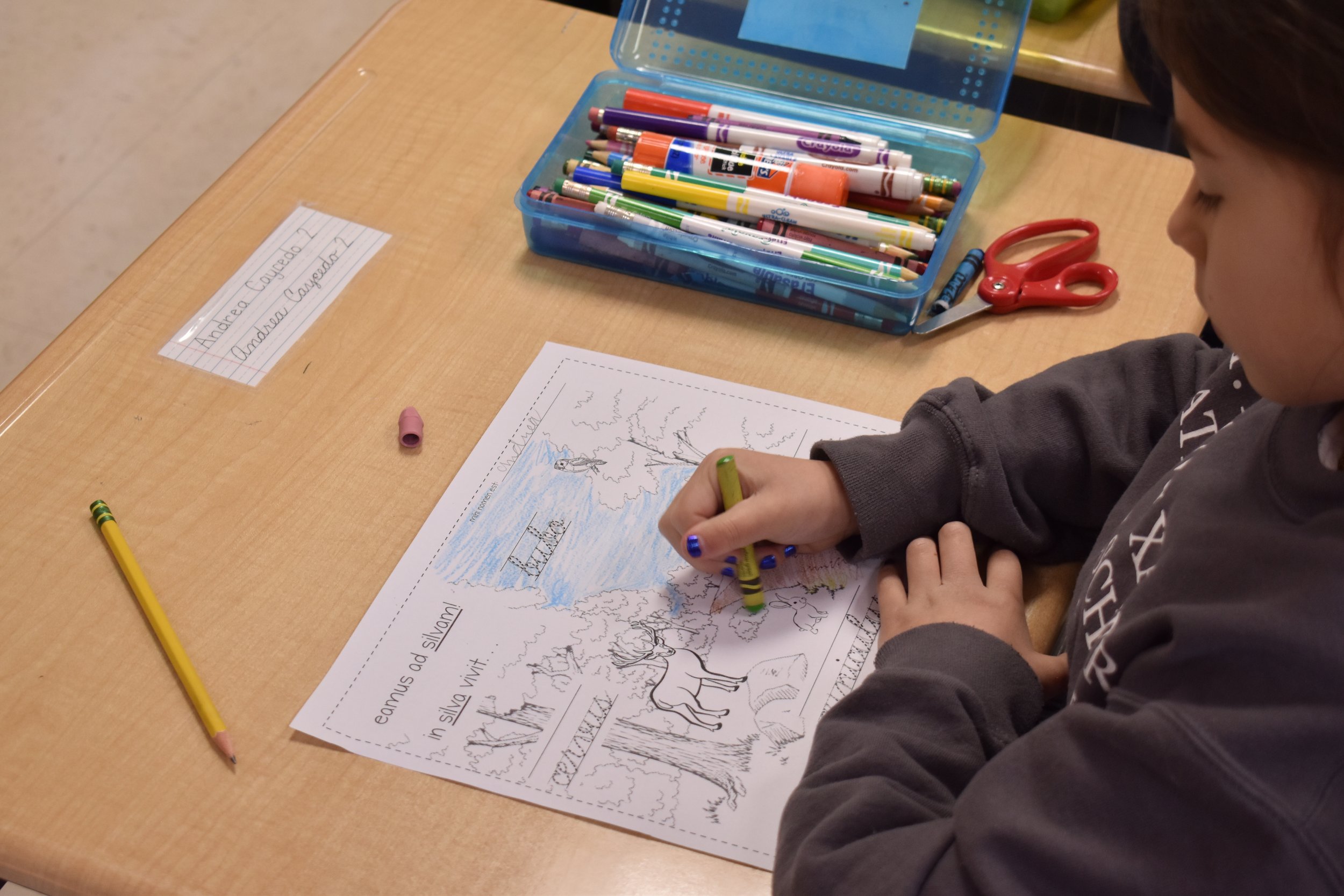
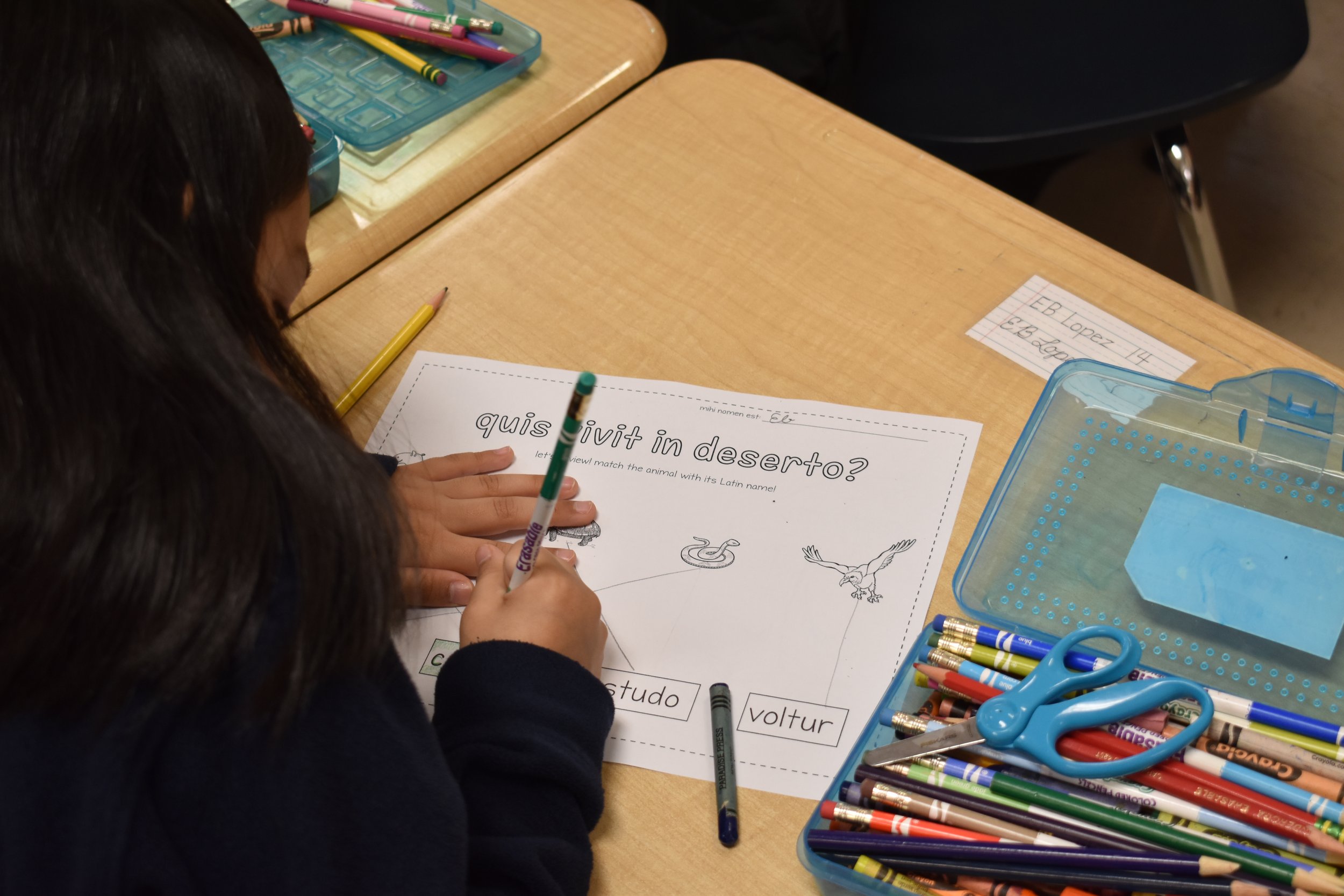

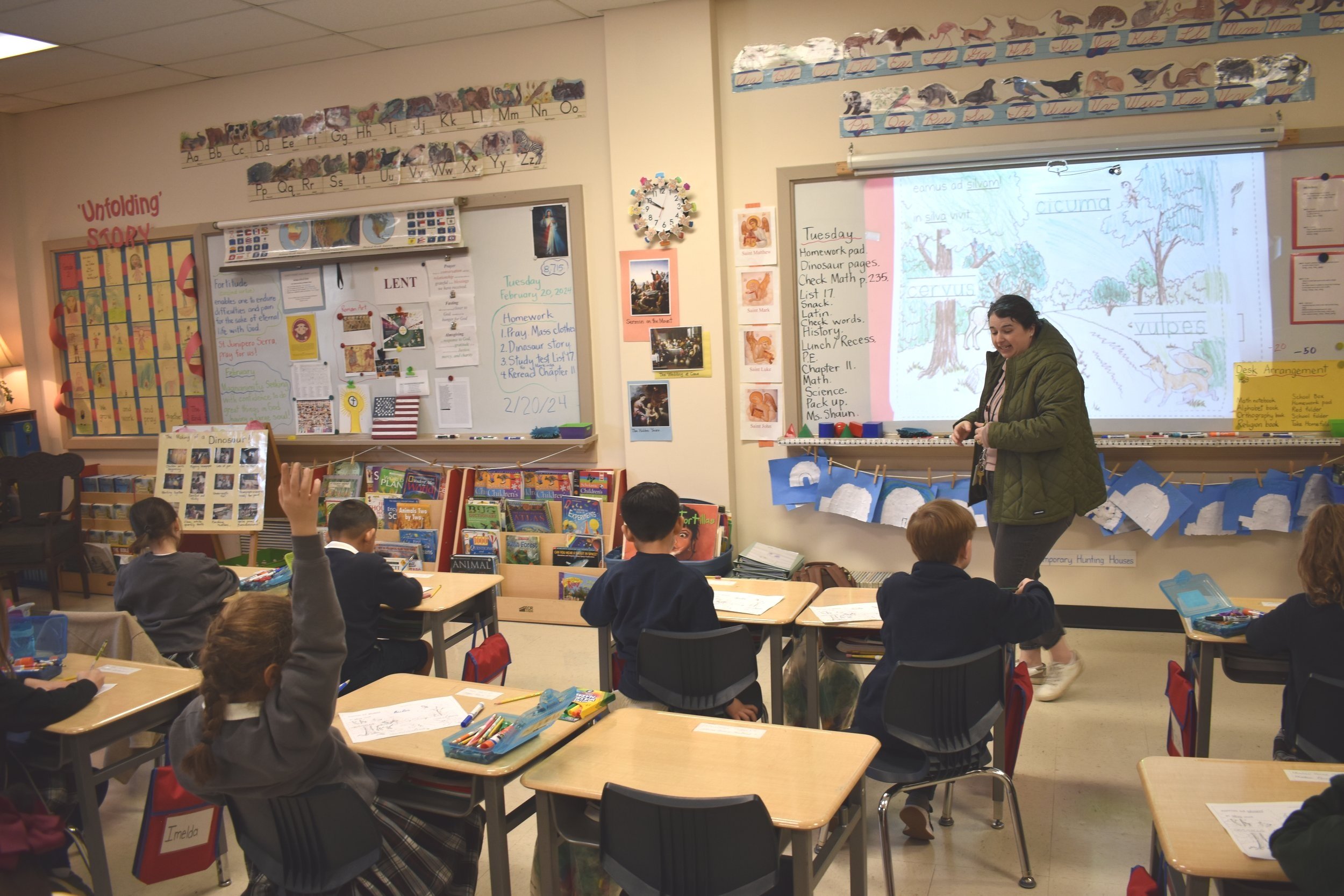
How Latin prepares elementary school students for middle school
SFX students in the third through fifth grades transition to increasingly challenging work as they develop more advanced reading comprehension skills. Students at this stage of Latin become skilled at making connections as we lay the groundwork for tackling more difficult grammatical, linguistic and cultural topics in middle school.
At SFX School, third, fourth and fifth grade students participate in question-and-answer discussions, also known as Socratic seminars, as well as discussions about works of classical art entirely in Latin. When students participate in conversation completely in a new language, it drastically increases their comfort with the language and their ability to process and comprehend it.
Socratic seminars are a core component of the classical curriculum and improve students’ critical thinking skills. Picture talks are wonderful tools in a language classroom, during which students make observations and discuss their observations in the new language.
We also use a teaching technique known as the Gouin Series, which involves groups of short sentences that tell a simple story. Students hear and repeat these sentences in a variety of ways across multiple class days to increase comfort in listening to and speaking in a new language.
During this process, students talk about careful pronunciation, notice patterns in Latin words and have discussions about differences they see between Latin, English and Spanish.
How Latin prepares middle schoolers for high school and beyond
Middle school coursework advances in both grammar and history as students learn to identify and organize language patterns they encounter in Latin and connect the language to facets of Roman life and history.
SFX middle schoolers learn to translate more complex sentences and connect the language with the history of the people who spoke it. Our course of study takes us through a year in the life of an ancient Roman family during the reign of Emperor Nero. We ask difficult questions about the experiences of Christians under his reign and we translate passages from Latin detailing the fear and courage many Roman Christians experienced at this time.
Many middle schoolers have chosen to continue their study of Latin through high school and are enrolled in the Latin program at John Carroll Catholic High School (JCCHS).
Others, however, chose to switch to modern languages and were able to draw on their wonderful classical foundations to speed up their vocabulary acquisition. Many former Latin students cite benefits unrelated to learning a world language such as ease of understanding and excellence in an AP Biology course due to the many Latin words in the curriculum.
Can Latin help my child in other languages?
Though some refer to Latin as a “dead language,” Latin is very much alive and thriving as an integral part of many modern languages throughout the world.
Latin is the common ancestor of all modern Romance languages: Spanish, Italian, Portuguese, French and Romanian.
For that reason, the vocabulary of these languages is rooted in Latin vocabulary. In Spanish and Italian, 70% and 85% of words are derived from Latin respectively. In fact, our students who are fluent in Spanish regularly make connections between the two languages and acquire vocabulary very rapidly. A solid foundation in Latin can provide a shortcut of sorts to reading these modern languages.
Additionally, Latin was used throughout all of Europe for international communications, presentation of scientific research, within the church and in government records until the 18th century. Because of this, over 90% of scientific terms are derived from Latin as well as many legal terms, which come down to modern languages as academic terminology and are used for all modern contracts, briefs and research across the world.
For this reason, SFX scholars often notice a meaningful link between very advanced English words and Latin words. For instance, the Latin word “malum,” which means “bad,” can help us decode the English word “malicious”, or the phrase “quid pro quo” as a Latin legal term that has become so common it is not translated out of Latin at all.
Though Latin is a direct ancestor of modern Romance languages, it also has a huge influence on Germanic languages as well (German, English, Dutch, Swedish). This influence is found in academic vocabulary, as stated previously, but also in the grammar of English and German.
Students will find that Latin grammar is a wonderful foundation for their English course. Elementary students will encounter terminology often in Latin before or around the same time as they see it in their English class.
Middle schoolers frequently encounter concepts like the infinitive, verb conjugation and verb person before or at the same time as they see it in English. Therefore, Latin provides these students an additional opportunity to observe connections, retain these new concepts and practice them in class.
Through SFX School’s Latin curriculum, students become closely familiar with observing these classical roots in the English language.
What Latin brings to a Catholic education
The texts of the Old and New Testament, though originally written in Hebrew and Greek, were first distributed in a collected and translated Latin form by St. Jerome in the 4th century AD.
At this time, vulgar Latin was the language that the majority of Christians would have been able to understand. This text would become the official Bible of the Church, to be used in all Masses, which themselves were performed in Latin for almost 1,500 years.
Because they are learning Latin, SFX students study the prayers of the rosary in their original language. Students quickly notice that the translations of these prayers sometimes include words they do not understand or changes to the original Latin prayer. By studying these prayers in the language in which they were revealed, we gain a greater understanding of what we mean when we pray these words in our own language.
As an example, we can examine the first lines of the Our Father: “Hallowed be thy name.” The majority of students cannot define the English word “hallowed.” However, they learn that the Latin word used here, sanctificetur, means “to be made holy”. Thus, they gain a better understanding of a prayer they pray every single day before school begins.
Additionally, the creation of a Latin rosary booklet allows each class to rest in prayer, acknowledging that while these words are in a language that is new to them, the prayers continue to provide peace and connection as they come together in community with God.
Latin is a beautiful language
Many people view Latin as arcane, dull or too difficult. Older generations have stories of memorizing endless charts. At its core Latin is highly structured, predictable and, in many ways, similar to a computer or programming language.
Yet, creating a Latin sentence is a holy and artistic process. Students can put the words in any order they like to paint a picture or emphasize a certain word. They carefully think about how to form their words and celebrate one another when they execute small, precise details.
Translating ancient texts is a disciplined and collaborative art: choosing which English word best represents the author’s intentions, making sure to reflect the grammar as it is written and, perhaps most difficult, capturing the spirit of the original text.
Many SFX middle schoolers will sit in groups with a Latin text and get lost in another world as they translate together. They will debate grammatical structures and workshop English word order to get a translation that is just right and tells the story well.
From this, they walk away with a greater appreciation of laborious tasks and a better understanding of historical events.
Latin is not dead in our classrooms. Latin thrives in our classrooms. The SFX mission is to inspire students and to encourage in them a love for the True, Good, and Beautiful. Our Latin curriculum is rooted in this.
St. Francis Xavier Catholic School is an accredited classical Catholic PreK-8 school in Birmingham’s Crestline neighborhood that uses the time-tested Catholic Intellectual Tradition to form students in virtue through the pursuit of academic excellence and service toward God and neighbor.
You can stay up to date with the school by connecting with us on Facebook, Instagram and LinkedIn.

